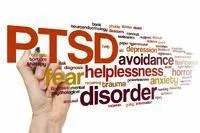
What is Trauma?
A traumatic event is often a subjective experience in which a person feels overwhelmed, scared, and often alone. Sometimes this is one event; however, this is not always the case. For some people small traumas can add up and be just as difficult as one significant event. An event does not have to involve physical harm to be traumatic. Sometimes the most traumatic events involve witnessing something that happens to someone else, or it can be finding out news that feels too much to bear such as a death of a loved one. Some other events that have been traumatic have included: being injured, having surgery, the break up of a significant relationship, finding out about an affair, being bullied, being humiliated or deeply disappointed, controlling relationships, living in an unstable environment, being neglected, any type of abuse, an abortion, incredible loss, or domestic violence. The truth is that almost everyone will go through a traumatic event at some point in their life.
Everyone interprets life's events in their own way including trauma. Traumatic events come in many forms, but are generally distinguished from other experiences by the severity of the event and the intensity of the person’s reaction to it. People react differently to similar events which makes trauma subjective. For example, one person may perceive an event to be traumatic (such as being bullied or a car accident) while another person may not be affected at all. Since trauma is a subjective experience, a person's response to trauma can vary widely. Some common reactions to trauma include: fears of "going crazy", having the feeling of "being damaged", difficulty functioning at home or work, difficulty with relationships, having intrusive thoughts or nightmares, obsessing about the event, avoiding anything that reminds one of the event (people, places or things), feeling disconnected or numb, feeling guilt or shame, using alcohol or drugs to feel better, having anxiety or panic, being "jumpy", outbursts or anger, mood swings, always being "on guard", and/or irrational fears. Sometimes people have these symptoms without even realizing that they are the result of trauma. Often times ones responses are misinterpreted as chronic anxiety, depression, and other mental health issues.
What can I do?
After a traumatic event, a person may have such strong emotions that it may seem impossible to ever recover. It may be that the trauma is influencing a person's thoughts, emotions, and actions without the person even understanding to what extent this is happening.
We believe that there is always hope. While we do not brush aside any person's experience, we do work hard to help people to be able to approach what happened calmly and safely, to think clearly about it, and to find healthy ways to cope with the past. For each person this is different, but the goals are similar. We want to help people to have a calm mind, a calm body, and healthy relationships at a pace that is appropriate for the individual.
It is important to find a therapist who is trained in treating trauma in all its forms. It may also be important to find a therapist who is trained in helping with relationships as well. Both Heather and William are trained in a variety of treatments for trauma including EMDR, Internal Family Systems Therapy, Air Network Therapy and Cognitive Behavioral Therapy among others. However, we also understand that any therapy is about relationship, understanding, and healing. It is much easier to heal with others than to try and go it alone.
What is EMDR?
EMDR (Eye Movement Desensitization and Reprocessing) developed by Francine Shapiro, is a powerful short-term, empirically proven and highly effective therapy for the treatment of trauma.
Psychological trauma is essentially the result of reliving the event all over again because the images, smells, sights, sounds and feelings are still there and can be triggered in the present. When activated, these memories cause a negative impact on our daily functioning and interfere with the way we see ourselves and our world and how we relate to others.
EMDR does not involve the use of drugs or hypnosis. It is a simple non-invasive patient-therapist collaboration in which healing can happen effectively. EMDR involves recalling the beliefs, emotions and bodily sensations felt during the traumatic event that over time become “trapped or hidden” can continue to interfere with our ability to completely process the experience.
A key element of EMDR is “bi-lateral stimulation”. During treatment, you are asked to think about memories, triggers or painful emotions while simultaneously focusing on some form of bilateral eye movements, bilateral tactile stimulations, or chimes that pan back and forth from ear to ear. The bi-lateral stimulation then starts to relieve the anxiety associated with the trauma so that the original event can be examined from a more detached perspective, somewhat like watching a movie of what happened. This enables you to access positive ways of reframing the original trauma (reprocessing) and to release the body’s stored negative emotional charges (desensitization).
The use of EMDR therapy involves specialized training. Both William and Heather are certified clinical trauma professionals who are trained and experienced in using EMDR. If you think this may be a treatment option for you please call and we can answer any questions you may have. EMDR is safe and effective for both adults and children.

